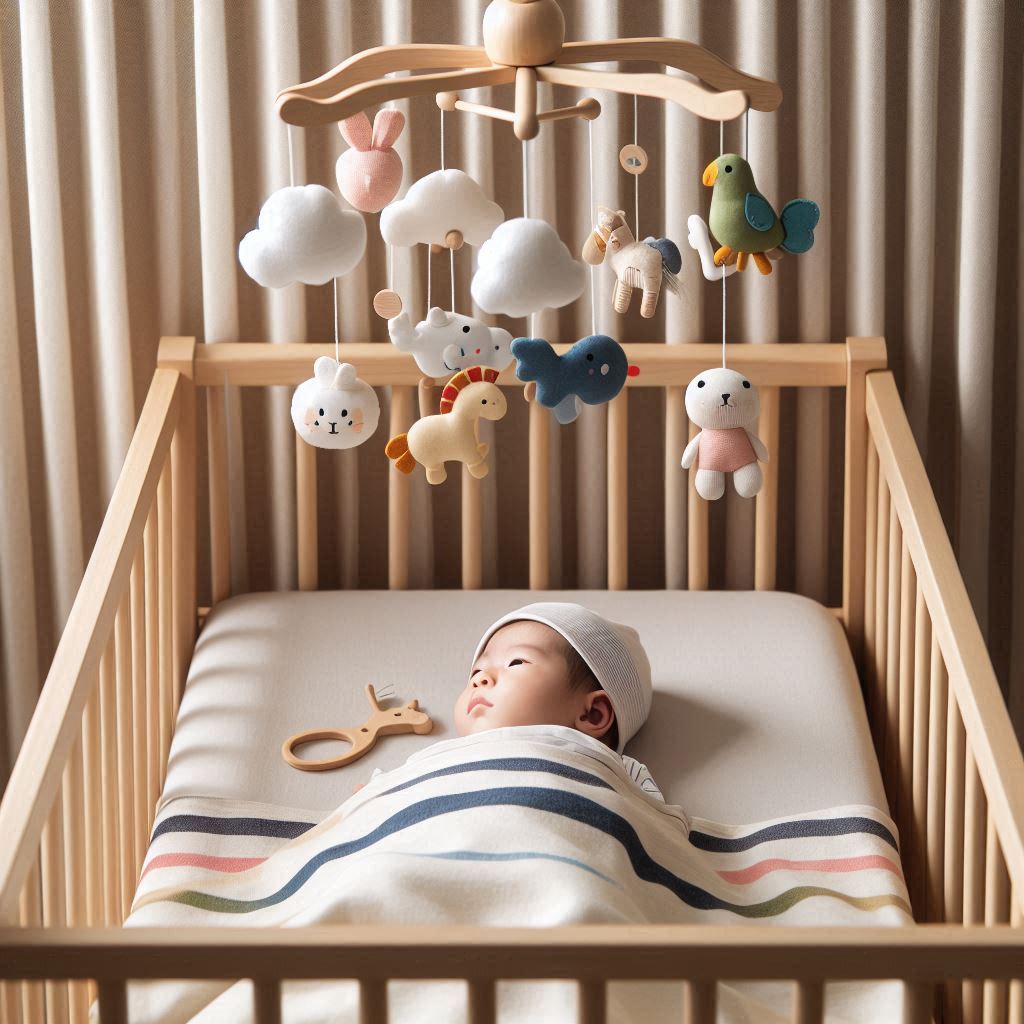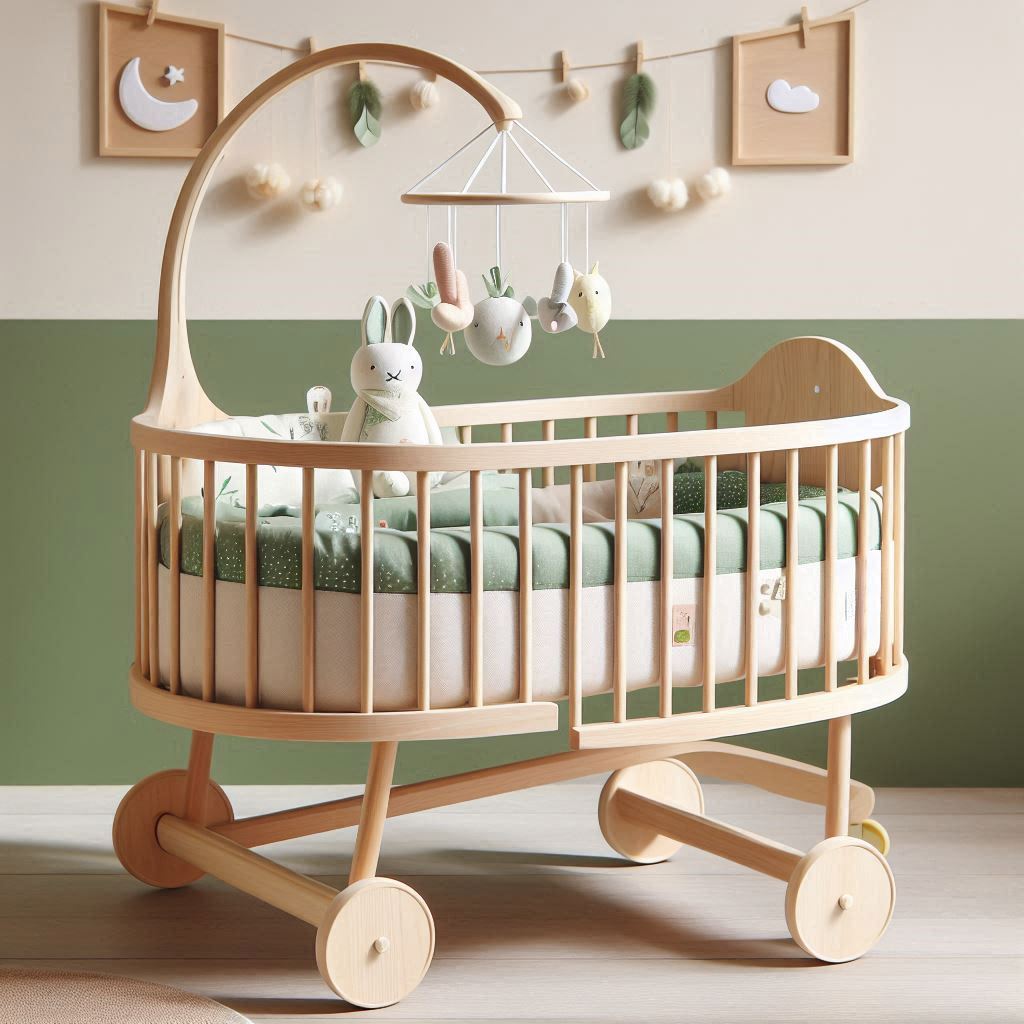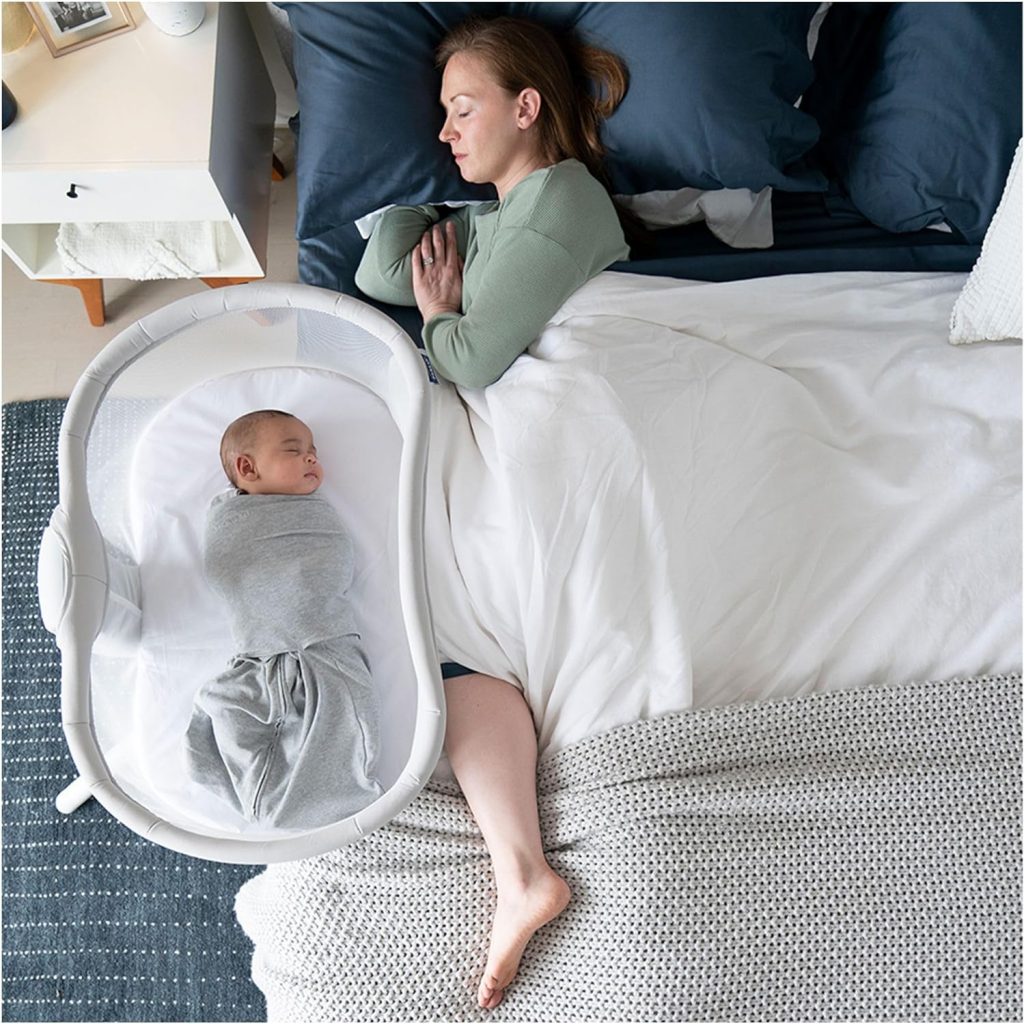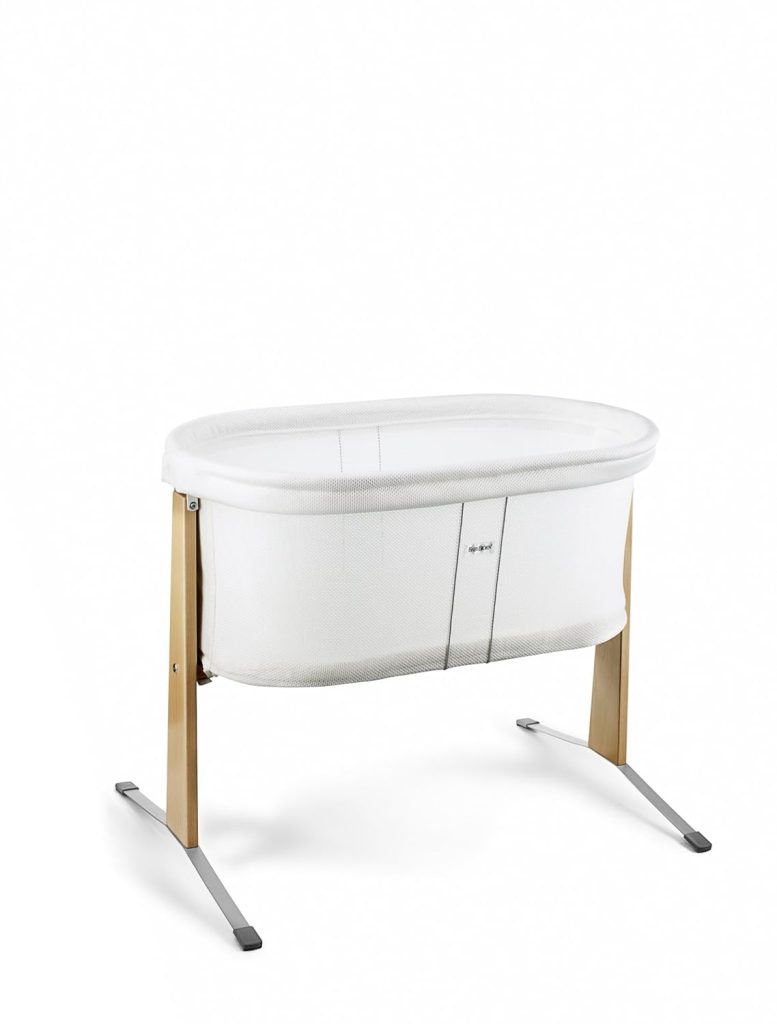Best Non-Toxic Bassinets: Save Your Child From Toxicity
Welcoming a new baby in the family that too with a Non-Toxic Bassinet is a joyous and safe occasion. As parents, ensuring the safety and comfort of your newborn baby is a top priority. An important decision is choosing a bassinet.
This article will help you understand why choosing a non-toxic bassinet is important for your baby’s health today and how to find the best bassinet.

What is a Non-Toxic Bassinet?
A non-toxic bassinet is made from materials that do not release harmful chemicals. These bassinets avoid using substances like formaldehyde, phthalates, flame retardants, and heavy metals. Exposure to these chemicals can pose health risks to infants, including respiratory issues, allergies, and developmental problems.
Why Choose a Non-Toxic Bassinet?

Babies spend a lot of time sleeping, especially in their first few months. Choosing a non-toxic bassinet ensures that they are not exposed to harmful substances during this critical time of growth and development. Here are some key reasons to choose a non-toxic bassinet:
Health and Safety: Non-toxic materials reduce the risk of allergies, respiratory issues, and skin irritations.
Better Sleep Quality: A safe environment helps your baby sleep better and longer.
Environmental Impact: Non-toxic bassinets are often made from sustainable materials, reducing environmental harm.
Key Features of a Non-Toxic Bassinet
When shopping for a non-toxic bassinet, look for the following features:
Certified Non-Toxic Materials
Check for certifications like GREENGUARD Gold, OEKO-TEX, and CertiPUR-US. These certifications ensure the bassinet meets strict standards for low chemical emissions and safe materials.
Solid Wood Construction
Solid wood is a safer choice than engineered wood, which can contain harmful glues and chemicals. Look for bassinets made from natural, untreated wood like maple, oak, or birch.
Organic Fabrics
Choose bassinets with bedding and mattresses made from organic cotton or other natural fibers. Organic fabrics are free from pesticides and synthetic chemicals.
Non-Toxic Finishes
Ensure that any paints or finishes used on the bassinet are non-toxic. Water-based paints and natural oils are safer options.
No Flame Retardants
Avoid bassinets with foam mattresses treated with flame retardants. These chemicals can be harmful to your baby’s health. Opt for natural materials like wool, which is naturally flame-resistant.

How to Choose the Right Non-Toxic Bassinet
Consider the Size and Portability
Think about the space where you will place the bassinet. Measure the area to ensure a good fit. If you plan to move the bassinet around the house, choose one with wheels or a lightweight design.
Check the Stability
A stable bassinet is essential for your baby’s safety. Look for one with a wide base and sturdy construction. Avoid bassinets that wobble or feel flimsy.
Look for Breathable Designs
A bassinet with mesh sides allows for better air circulation, reducing the risk of overheating and suffocation. Breathable designs also provide better visibility so you can keep an eye on your baby.
Ease of Cleaning
Babies can be messy. Choose a bassinet with removable and washable fabrics. This makes cleaning easier and helps maintain a hygienic sleeping environment.
Price and Budget
Non-toxic bassinets can range in price. Set a budget that works for you, but don’t compromise on safety and quality. Investing in a high-quality bassinet is investing in your baby’s health.
Top Non-Toxic Bassinets on the Market
Halo Bassinest Swivel Sleeper
Features: GREENGUARD Gold certified, mesh sides for breathability, 360-degree swivel.
Pros: Easy to access baby, adjustable height, includes organic mattress.
Cons: Higher price point.
BabyBjorn Cradle
Features: Made from sustainably sourced wood and organic cotton, JPMA certified.
Pros: Lightweight, easy to rock, stylish design.
Cons: Small sleeping area, may outgrow quickly.
Naturepedic Organic Cotton Bassinet
Features: Made from organic cotton fabric, non-toxic waterproof cover.
Pros: Firm and supportive mattress, hypoallergenic.
Cons: Limited availability, higher cost.
DaVinci Archie Portable Bassinet
Features: Made from New Zealand pine wood, GREENGUARD Gold certified.
Pros: Portable, affordable, eco-friendly.
Cons: Basic design, minimal storage.
Regular Cleaning
Wipe down the bassinet regularly with a damp cloth. Avoid harsh chemicals; instead, use mild soap and water.
Wash Bedding Frequently
Change and wash the bedding and mattress cover regularly. Use gentle, baby-safe detergents.
Inspect for Wear and Tear
Regularly check for any loose parts, screws, or splinters. Ensure the bassinet remains sturdy and safe.
Follow Manufacturer’s Instructions
Always follow the manufacturer’s guidelines for assembly, use, and maintenance. This ensures the bassinet is used safely and lasts longer.
Conclusion
Choosing a non-toxic bassinet is an important decision for your baby’s health and safety. By selecting a bassinet made from certified non-toxic materials, you can create a safe and comfortable sleeping environment for your newborn. Remember to consider factors like size, stability, breathability, ease of cleaning, and price when making your choice. With the right non-toxic bassinet, you can ensure your baby sleeps soundly and safely.
Investing in a non-toxic bassinet is a step towards protecting your baby’s health and the environment. As you prepare for your little one’s arrival, make informed choices that prioritize safety and comfort. Happy parenting!
Frequently Asked Questions
What is a safe bassinet?
A safe bassinet refers to a specially designed sleeping space for infants that prioritizes their safety and well-being. It typically includes features such as a sturdy and stable structure, breathable materials, a firm mattress, and secure sides to prevent the baby from rolling out.
Which is safer crib or bassinet?
When it comes to choosing between a crib and a bassinet, both options can provide a safe sleeping environment for infants.
Is it oK to not use a bassinet?
Certainly, it is perfectly fine to not use a bassinet for your baby if you prefer an alternative sleeping arrangement that meets safety guidelines. While bassinets offer convenience and proximity, there are other safe options available such as cribs or co-sleeping with proper precautions. It is important to ensure that whatever sleeping solution you choose provides a secure and comfortable environment for your baby.
Why do newborns not like bassinets?
Newborns may sometimes show a reluctance or resistance towards bassinets due to a few reasons. Firstly, the transition from the womb to the outside world can be overwhelming for them, and they may prefer a more enclosed and snug environment.
What are the disadvantages of bassinets for babies?
Bassinets can be outgrown quickly and may not offer the same level of comfort and support as cribs.
.


